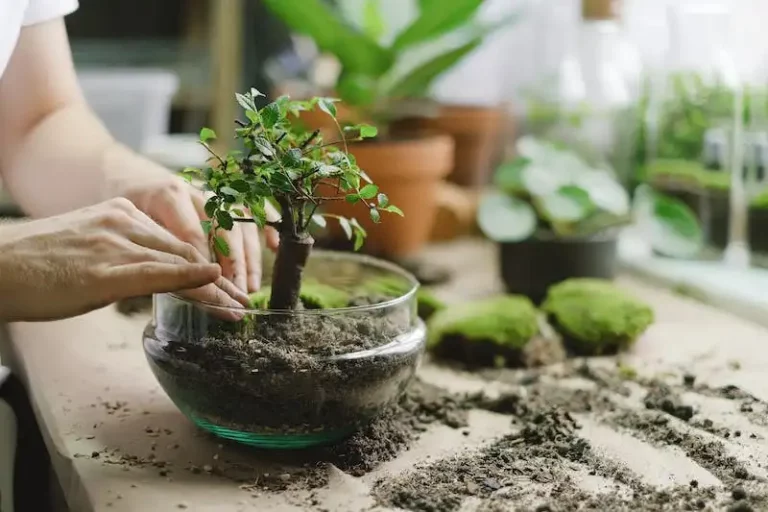Rex begonias are exotic plants that require special care to thrive. With their stunning foliage and vibrant colors, they are a favorite among plant enthusiasts. In this comprehensive guide, we will explore the ins and outs of rex begonia care, from watering and fertilizing to ideal placement and propagation techniques.
Watering is often a challenge with rex begonias, as they prefer a moist but well-draining soil. It is crucial to water them regularly, allowing the top inch of soil to dry out before the next watering. Overwatering can lead to root rot, while underwatering can cause the leaves to wilt and dry out. Finding the right balance is key to keeping your rex begonias healthy and happy.
When it comes to fertilizing rex begonias, it’s best to start in the spring and continue throughout the growing season. A balanced fertilizer with equal parts nitrogen, phosphorus, and potassium is ideal. Be careful not to overfertilize, as this can lead to excessive leaf growth and a decrease in flower production.
Rex begonias thrive in bright, indirect light. While they can tolerate some direct sunlight, too much can scorch their leaves. Finding the perfect placement for your rex begonia is crucial to its overall health and growth. A spot near a north-facing window or a few feet away from an east or west-facing window is often recommended.
Propagation is a great way to grow more rex begonias and share them with friends. The most common method is through stem cuttings. Choose a healthy stem with a few leaves and make a clean cut just below a node. Place the cutting in a well-draining potting soil mix and keep it in a warm, humid area. Within a few weeks, you should start to see new roots emerging.
Rex begonias are relatively pest and disease-free, but they can be susceptible to powdery mildew and root rot. To prevent these issues, make sure to provide adequate ventilation and avoid overcrowding the plants. Regularly inspect your begonias for any signs of pests or diseases, and take appropriate action if necessary.
With the right care and attention, your rex begonias will thrive and bring beauty to your home. Follow these tips and guidelines, and you will soon become a rex begonia expert!
Rex Begonia
Rex Begonias are a popular choice among plant enthusiasts, thanks to their stunning colors and unique foliage. These plants, often known simply as “Rex Begonias,” are hybrids that have been carefully cultivated for their attractive leaves.
Rex Begonias are relatively easy to care for, making them a great choice for novice plant owners. They prefer bright, indirect light and should be kept away from direct sunlight, especially during the summer months. If the leaves begin to develop sunburn spots, it’s a sign that they’re getting too much sun.
When it comes to watering, Rex Begonias like to be watered regularly but don’t want to sit in water. It’s important to make sure the potting soil is well-draining and that the water has a chance to drain out of the bottom of the pot. Watering from the bottom can help prevent overwatering and keep the roots healthy.
Rex Begonias thrive in humid environments, so it’s important to keep the humidity levels high. Placing a tray of water near the plants or using a humidifier can help achieve the right level of humidity.
Fertilizing Rex Begonias is also important for their overall health and growth. Using a balanced, water-soluble fertilizer once a month during the growing season will provide them with the necessary nutrients. It’s important not to over-fertilize as this can lead to leaf burn.
Rex Begonias can be propagated through stem cuttings or by leaf cuttings. Stem cuttings should be taken from the plant during the growing season and placed in a well-draining soil mix. Leaf cuttings can be taken and placed directly into the soil. Both methods can yield new plants relatively quickly with proper care.
In general, Rex Begonias are relatively disease-free. However, they can be prone to powdery mildew if the humidity levels are too high or if they’re kept in poorly ventilated areas. To prevent this, it’s important to provide adequate air circulation and avoid over-watering, especially on the leaves. If mildew does appear, there are various solutions available to treat it, depending on the severity.
In terms of temperature, Rex Begonias prefer average room temperatures, ranging from 60 to 75 degrees Fahrenheit (15 to 24 degrees Celsius). They’re generally not tolerant of extreme temperature fluctuations, so it’s important to keep them in a stable environment.
Their rhizomatous roots make them great potted plants, and they can be grown either indoors or outdoors. If grown indoors, they should be placed near a window with bright, indirect light, ideally receiving around 1000 foot-candles of light each day.
Taxonomy
When it comes to Rex Begonia care, understanding the taxonomy of these plants can be helpful. Rex Begonias (Begonia rex-cultorum) belong to the family Begoniaceae. They are a group of hybrid Begonias that prefer average humidity and well-draining soil. These plants are often found in homes as they are known for their exotic colors and foliage.
Rex Begonias are rhizomatous, meaning that they have an underground stem system similar to that of a ginger plant. They are not classified as succulents, so they require regular watering to keep their roots healthy. However, over-watering can lead to problems like root rot, so it’s important to find the right balance.
In terms of taxonomy, Rex Begonias belong to the section Rex of the genus Begonia. There are many different varieties within this section, including hybrids like the popular Zebra Begonia (Begonia ‘Guan’s Fireworks’) and the Begonia ‘Fireworks’. Each variety has its own specific care needs and preferences, so it’s important to research the specific cultivar for accurate care information.
When it comes to placement, Rex Begonias prefer bright, indirect light. Placing them near a window with filtered sunlight is ideal. Direct sunlight can scorch their leaves, while too little light can cause their colors to fade.
For soil, a well-draining medium is key. A mixture of peat moss, perlite, and vermiculite is a good choice. Some growers prefer to use a plastic pot with drainage holes to prevent root rot.
In terms of humidity, Rex Begonias love high humidity levels. Placing a tray of water near the plant or using a humidifier can help create a more humid environment. Misting the leaves occasionally can also provide some moisture.
When it comes to fertilizer, it’s best to use a balanced, water-soluble fertilizer diluted to half strength. During the growing season (spring and summer), fertilize every two to four weeks. In the winter, reduce fertilization to once a month or stop altogether.
Propagation of Rex Begonias can be done through leaf cuttings or division of the rhizome. Both methods can be relatively easy, but leaf cuttings may produce more varied results in terms of color and patterning.
In terms of pests, common pests that can affect Rex Begonias include mealybugs, aphids, and spider mites. Regular pest management and inspection are important to keep these pests at bay.
Overall, Rex Begonias are beautiful plants that can add a dramatic touch to any home. With the right care and attention to their specific needs, these plants can thrive and bring joy to their grower.
How to care for Rex Begonia
Rex begonias are a popular variety of begonias due to their beautiful foliage and unique patterns. They are grown primarily for their leaves, rather than their flowers. In order to care for rex begonias, there are a few key solutions to keep in mind.
- Growth: Rex begonias prefer high humidity and like to be in an environment with consistent moisture. They do well when the temperatures are above 60 degrees Fahrenheit.
- Light: Rex begonias do not like direct sunlight, as it can cause damage to their leaves. They prefer filtered light or medium light conditions of around 500 to 1500 foot-candles.
- Soil: Rex begonias prefer a well-draining soil mixture, such as a mix of potting soil, perlite, and peat moss.
- Watering: Rex begonias should be watered regularly, but not excessively. The soil should be kept evenly moist, but not waterlogged.
- Fertilizing: Rex begonias benefit from regular fertilization during their growing season, using a balanced fertilizer at half-strength every 4-6 weeks.
- Placement: Rex begonias should be placed in a location with bright, indirect light. They can be a bit finicky and may need to be moved around until they find their ideal spot.
- Pests: Rex begonias are relatively pest-free, but they can still be susceptible to common houseplant pests such as aphids or spider mites. Regularly inspect the leaves for any signs of pests and take appropriate action if necessary.
By following these care tips, you can ensure that your rex begonias remain healthy and vibrant throughout the year. With their exotic foliage and relatively low maintenance requirements, rex begonias make a great addition to any plant collection.
How often to water your Rex Begonia
Watering your Rex Begonia properly is essential for its growth and overall health. As with any plant, finding the right watering schedule is key. This article will guide you on how often to water your Rex Begonia to ensure its well-being.
Rex Begonias are native to tropical areas and thrive in higher humidity environments. They prefer moist soil but can’t tolerate overwatering or excess moisture, which can lead to root rot and other fungus-related problems.
In general, a well-draining potting medium is recommended for Rex Begonias. This type of medium helps prevent water retention and allows excess moisture to drain properly. This is crucial for root health and preventing diseases.
On average, Rex Begonias should be watered once the top inch of soil feels dry to the touch. However, the frequency of watering may vary depending on factors like the size of the pot, variety of Rex Begonia, temperature, and humidity levels.
One useful tip is to check the moisture level of the potting medium by sticking your finger about an inch deep into the soil. If it feels dry at this level, it’s time to water. If it still feels moist, wait a few more days before watering.
Another method is to use a moisture meter, which measures the moisture level of the soil. This tool can be helpful, especially for beginners, in determining whether or not the plant needs watering.
Remember, it’s better to underwater than to overwater your Rex Begonia. Overwatering can lead to root rot, which can be detrimental to the plant’s health. It’s always safer to let the soil dry out a bit in between waterings.
When watering, it’s important to thoroughly wet the entire root ball. Water should flow out of the drainage holes at the bottom of the pot to ensure the roots are properly hydrated. Any excess water should be discarded to avoid waterlogged conditions.
Rex Begonias generally prefer bright, indirect light but can tolerate lower light conditions as well. The amount of light they receive can affect their water requirements. In dimmer areas, the potting medium may take longer to dry out, so watering should be adjusted accordingly.
It’s also essential to avoid getting the leaves wet when watering. Water droplets on the leaves can cause leaf spots and other fungal issues. If you accidentally wet the leaves, gently pat them dry with a soft cloth or tissue.
In addition to proper watering, Rex Begonias benefit from regular fertilization to support their growth. A balanced fertilizer, such as a 20-20-20 formula, can be used every month during the growing season (spring to summer) at half strength. Always follow the instructions on the fertilizer package for the appropriate dilution and frequency.
In conclusion, understanding how often to water your Rex Begonia is essential for its overall care and management. By providing the right amount of water, proper placement, and regular fertilizing, you can enjoy these exotic plants and ensure they thrive in your home.



